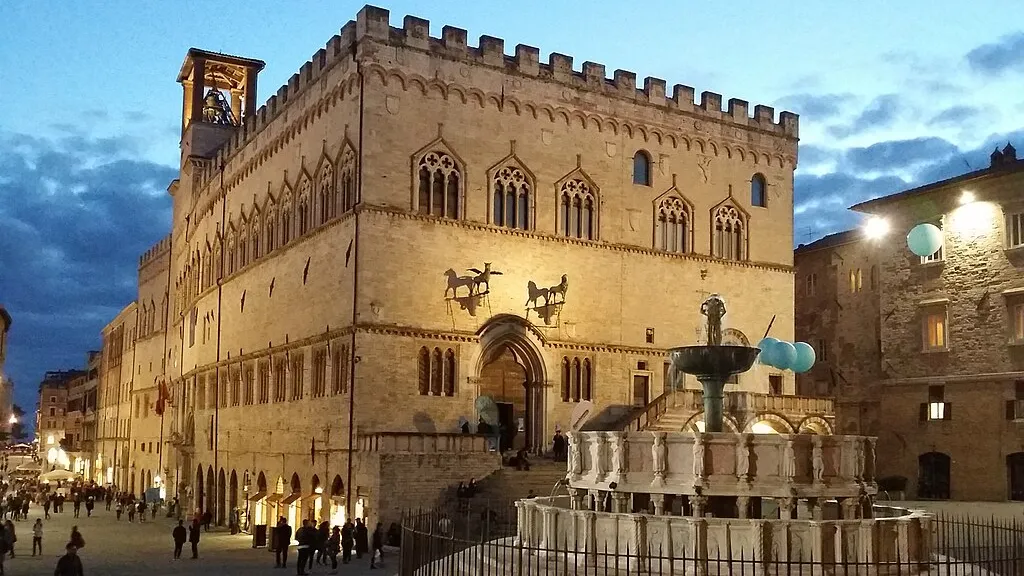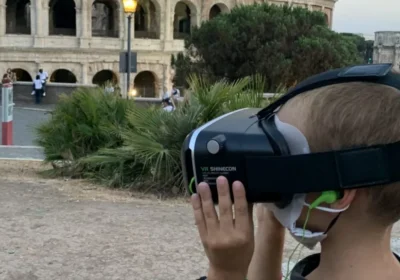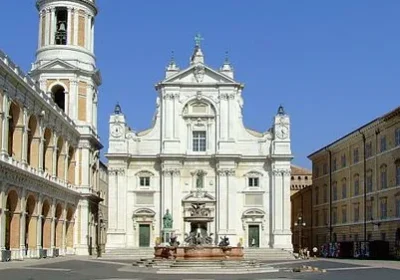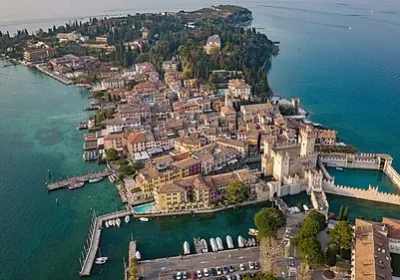Tour of the National Gallery of Umbria and the Collegio del Cambio.
The National Gallery of Umbria is an art collection located in the Palazzo dei Priori in Perugia. Its collection consists of works by the greatest representatives of the Umbrian school of painting, dating from the thirteenth to nineteenth centuries, but most of the paintings were painted in the fourteenth to sixteenth centuries. The entire art collection is housed in the Palazzo’s 23 galleries.
The collection began in the mid-16th century with the creation of the Perugian Academy of Drawing. The Academy was then housed in the Olivetan convent of the Convento degli Olivietani in Montemorcino, where the first paintings and drawings were exhibited. With the closure of most religious institutions during Napoleon’s reign and then their restoration after the unification of Italy, most of the works of Italian art ceased to be the property of the church and became the property of the state. In 1863, the city’s painting collection was named in honour of Pietro Vannucci, known as Perugino, one of the greatest Italian painters. However, the problem of constructing a separate building for the gallery was not solved until 1873, when the third floor of the Palazzo dei Priori in the very centre of Perugia was allocated for this purpose. In 1918 the Pinacoteca, which had increased its holdings thanks to numerous acquisitions and donations, became the Galleria Vannucci and its patron was the King of Italy himself.
Since the Gallery is located in the Palazzo dei Priori, it is possible to see the interiors of the palace, its high and spacious halls, the Priori Chapel with frescoes of 15th century Perugia.
There are works by Duccio da Boninsegna, Gentile da Fabriano, Beato Angelico, Piero della Francesca, Nerugino, Pinturicchio.
On the ground floor of the palace you can visit the Collegio del Cambio and admire the monumental frescoes by Perugino and his pupils, among whom was the young Raphael The Collegio del Cambio is nothing but an ancient exchange office. Not only currency was exchanged here, but also fresh gossip and business news. Bankers in those days were simpler and preferred to communicate not through secretaries but by visiting such places themselves.
Collegio del Cambio, one of the rooms of the Palazzo del Priori, the headquarters of one of the local guilds. The drawing-room is beautifully decorated with many valuable works of art. In 1611, when it was rented by the legal guild, the work of improvement began, and the woodwork was executed by a brilliant craftsman named Gianpiero Zuccari. There were other powerful guilds in Perugia, and it was their wealth that ensured that this palace and its halls were transformed into truly luxurious places with lots of wood, frescoes, frescoes and terracotta statues. The Cambio is accessed through a long and narrow room known as the Legislative Hall. Then there is another room – the best of Renaissance art. The beauty: wood carvings by Domenico del Tasso, wooden doors by Antonio Bencivenni, frescoes on the walls by Pietro Vannucci or Perugino, a side chapel dedicated to San Giovanni, with wood carvings and paintings.
.

















